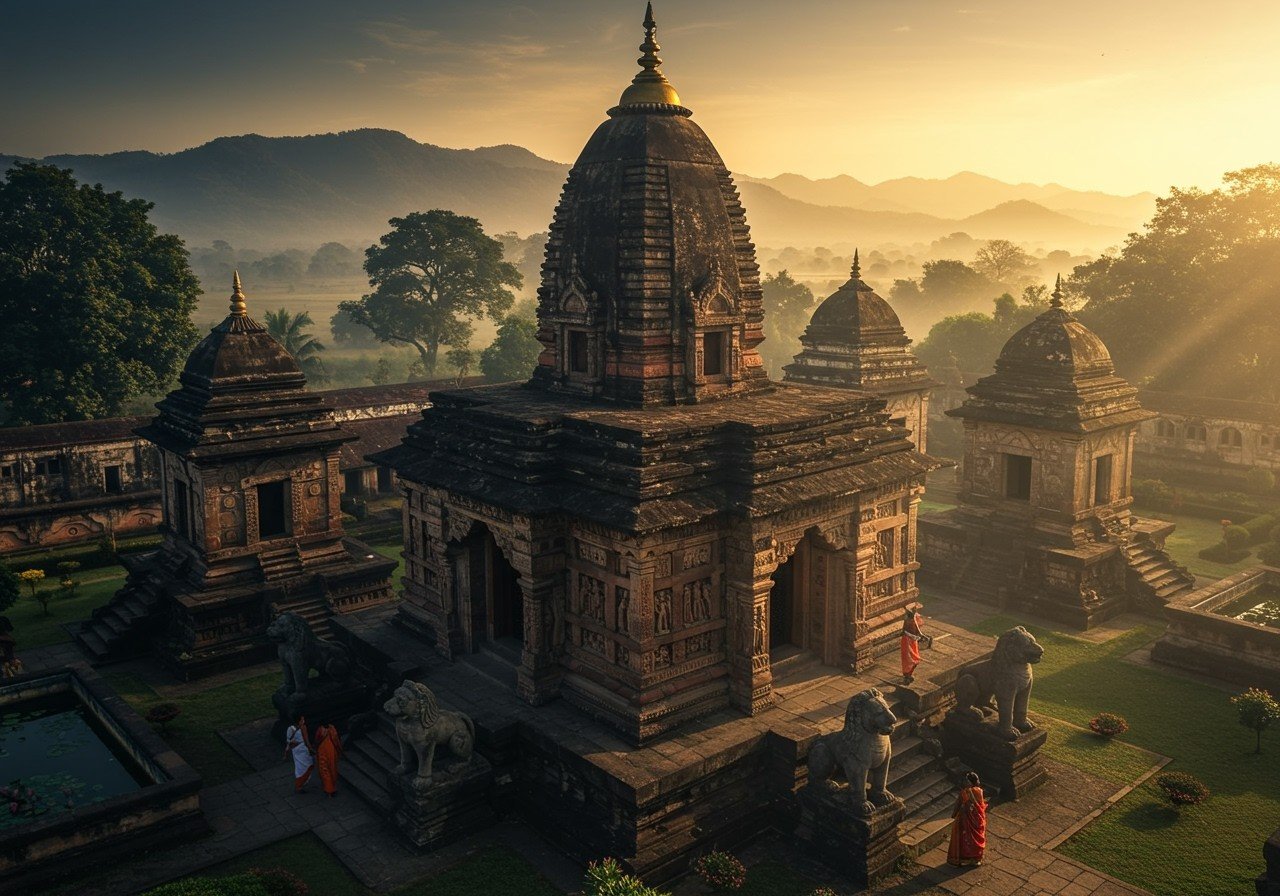
King Siva Singha’s architectural contributions offer a captivating journey into Assam’s vibrant cultural heritage. His reign during the Ahom dynasty (1714-1744) significantly shaped the region’s unique architectural identity, blending traditional Assamese styles with influences from neighboring regions and creating a legacy that continues to inspire awe and reverence. This article delves into Siva Singha’s impact and the distinctive features of Ahom architecture.
The Historical Tapestry of Ahom Architecture
The Ahom dynasty, with roots tracing back to Myanmar, ruled Assam from the 13th to the 19th centuries. Their architectural style evolved as a beautiful fusion of indigenous Assamese traditions with elements from Southeast Asia, Hinduism, and even the Mughal aesthetic. This fascinating blend created a style as unique as the region itself.
-
Religion and Rituals: Deeply rooted spirituality played a central role in Ahom design. Temples, dedicated to a pantheon of deities, featured curved roofs reminiscent of traditional Assamese homes and delicate lotus motifs, symbolizing purity and divinity. The architecture served as a physical manifestation of the Ahoms’ reverence for the divine.
-
Materials and Techniques: Early Ahom builders skillfully utilized locally available materials like bamboo, timber, and thatch, harmonizing their structures with Assam’s lush landscape. As the dynasty prospered, they embraced brick and stone, employing a remarkable mortar crafted from mustard oil, jaggery, and fish—a testament to their ingenuity and resourcefulness. This unique mortar ensured durability, allowing these magnificent structures to withstand the test of time.
Siva Singha’s Architectural Footprints
Siva Singha’s reign saw the construction of several iconic structures that stand as testaments to his vision and the dynasty’s architectural prowess. Temples, palaces, and fortifications showcase his innovative approach, blending functionality with artistic expression.
-
The Rang Ghar: A true marvel, the Rang Ghar stands as one of Asia’s oldest amphitheaters. Its octagonal base and unique roof, said to resemble an Ahom royal longboat, speak to Siva Singha’s creative spirit. The intricate carvings adorning this structure further highlight the dynasty’s artistic finesse.
-
The Kareng Ghar (Garhgaon Palace): Originally constructed from wood, the Kareng Ghar later underwent a transformation, being rebuilt with brick and stone. Serving as the central administrative building, it reflects the dynasty’s strategic acumen and organizational prowess.
Ahom Architecture’s Enduring Influence and Cultural Significance
Siva Singha’s architectural innovations have left an indelible mark on modern Assamese architecture. Traditional techniques, honed over centuries, continue to be preserved and adapted, ensuring the legacy lives on. Recognizing the importance of Ahom architectural heritage is key to fostering a strong sense of regional identity.
These architectural wonders aren’t merely structures; they are powerful symbols of Assamese heritage and pride. They play a vital role in preserving cultural narratives, passing down stories through generations, and educating future generations about their rich past. Deeply interwoven with local festivals and community activities, they reflect the strong cultural ties that bind the people of Assam together.
Experiencing Ahom Architectural Treasures
A visit to these historical sites is like stepping back in time. Witness the grandeur of the Shiva Doul, Vishnu Doul, and Devi Doul in Sivasagar, a testament to the Ahom dynasty’s religious devotion. Explore the Maidams at Charaideo, burial mounds of Ahom royalty and nobility, now recognized as a UNESCO World Heritage Site.
Plan your visit to coincide with local festivals for a truly immersive cultural experience. Engaging with local communities provides a deeper understanding and appreciation of these precious cultural treasures.
For a deeper understanding of Hindu temple architecture, you can explore these resources:
- Hindu Temple Architecture: A Journey Through Sacred Spaces
- Key Elements of Traditional Hindu Architecture: A Complete Guide
- Hindu Architecture Styles: A Complete Guide
- Hindu Architecture: Tradition Meets Modern Design
Embrace the Spirit of Tradition with Poojn.in
Poojn.in, India’s leading online store for cultural goods and services, offers a wide selection of authentic puja items and home décor inspired by traditional Hindu architecture. You can find everything you need to create a sacred space in your home, from intricately designed diyas and incense holders to beautiful statues of deities and holy books. We understand the importance of maintaining the sanctity of these items and take great care in packaging and shipping them across India.
Enhance your home temple with a touch of traditional elegance with our handcrafted wooden masks: Explore our collection of Handcrafted Wooden Masks.
Illuminate your puja room with the warm glow of traditional clay diyas, available at Poojn.in: Shop Clay Diyas Now.
For all your puja needs, Poojn.in provides a diverse range of flammables such as wicks, incense sticks, and camphor: Browse our Flammables Collection.
Dress for your spiritual practices with authentic holy clothing from Poojn.in: Find Your Holy Clothing.
Conclusion
Siva Singha’s architectural legacy remains a shining example of Assam’s rich cultural tapestry. His innovative designs, blending diverse influences, have not only enriched the region’s architectural landscape but also strengthened its cultural identity. As we admire these magnificent structures, let us cherish and protect this invaluable heritage for generations to come.


